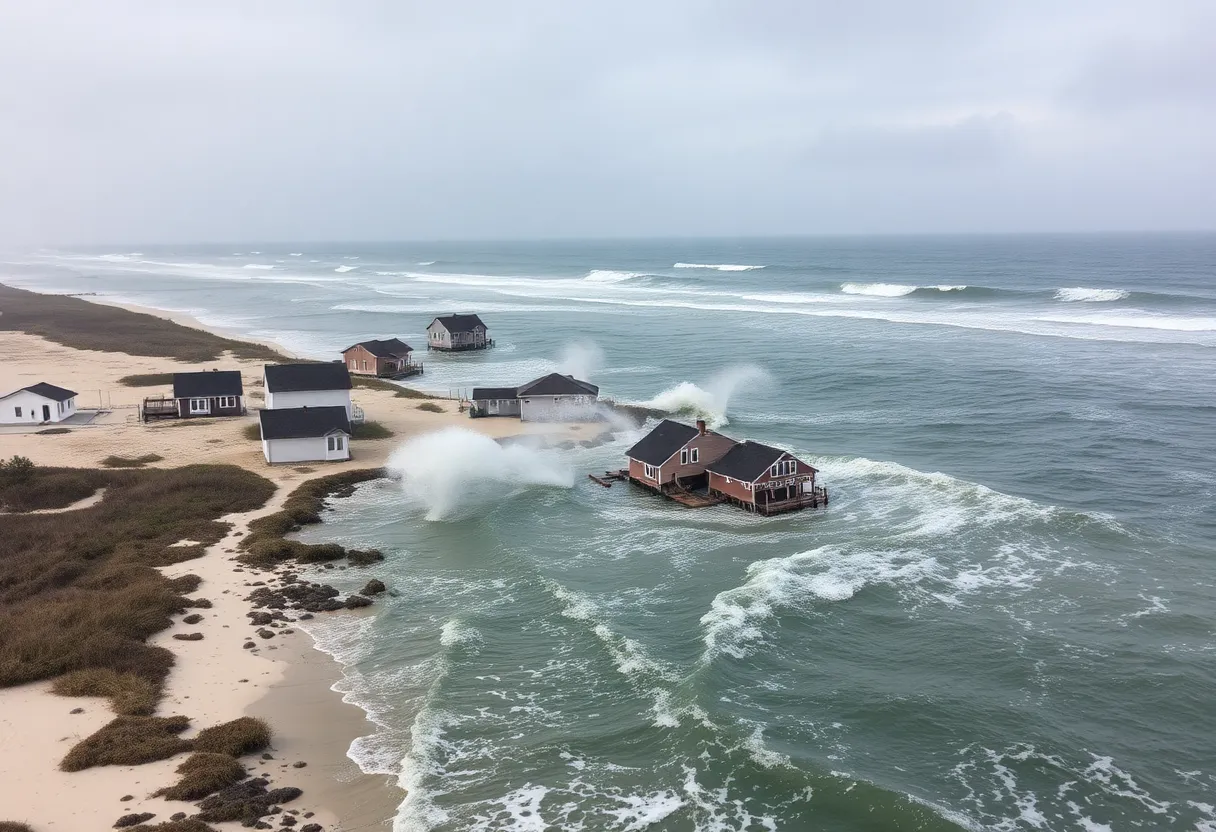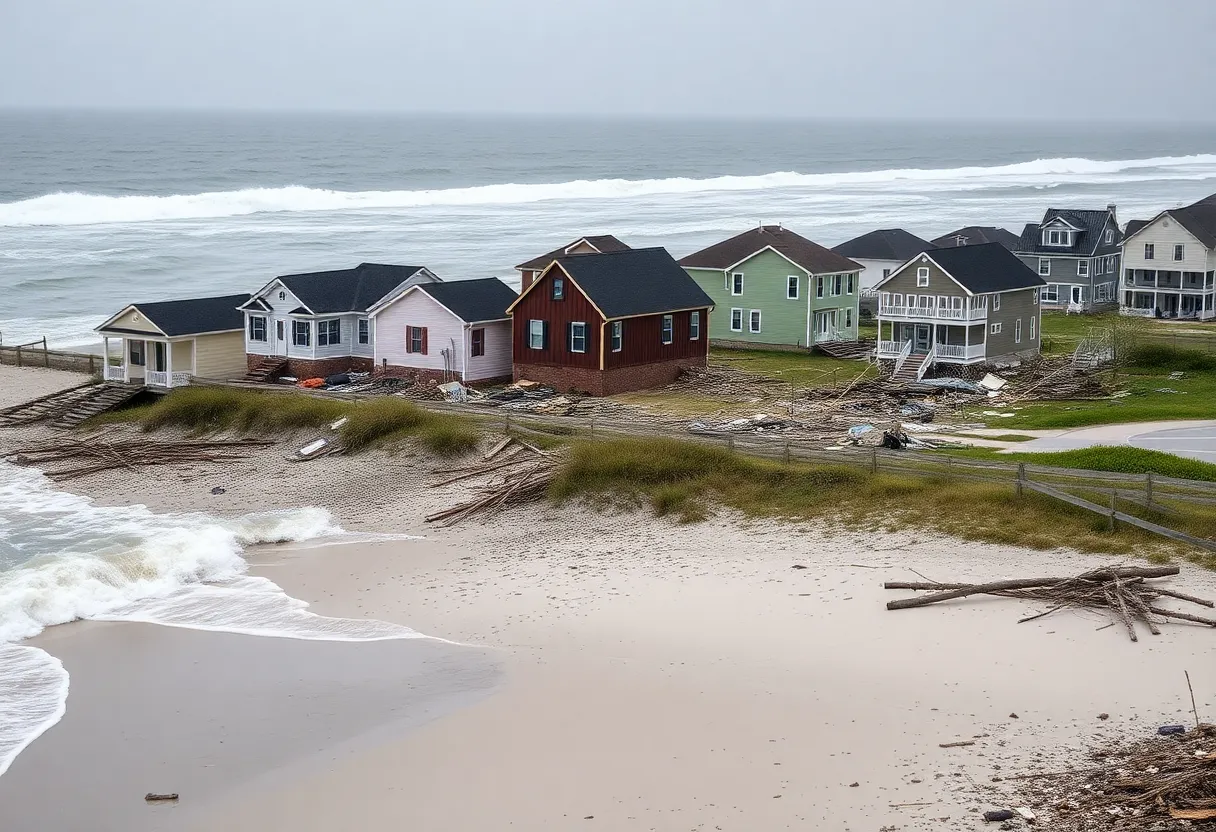Wilmington Residents Face Rising Waters: A Conversation on Climate Change
Wilmington is no stranger to the effects of climate change. Recently, a three-part series called “Rising Waters” has brought to light the urgent challenges our coast is facing. David Boraks, a climate reporter, has explored the impact of rising sea levels on the North Carolina coastline, driving home the message that it’s time to start engaging in serious conversations about our future.
What’s Happening on the Outer Banks?
The series kicks off in the idyllic community of Rodanthe, located in the Outer Banks. Just last month, the ocean claimed another cedar shake cottage—marking it as the seventh home to fall to the sea in merely four years. As you can imagine, watching the ocean steadily erode the sandy beaches can be a hard pill to swallow for homeowners. Each year, North Carolina loses over 10 feet of sand to the Atlantic, and experts like coastal geologist Rob Young are urging stakeholders to confront hard truths. “Nobody wants to talk about it,” Young pointed out, “but it’s really time to talk about it.” The idea that every oceanfront home can be saved is, as he says, simply absurd.
The Never-Ending Sand Dance
In the second segment of the series, Boraks dives into the world of beach renourishment, a complicated process where sand is moved from one area to another in an attempt to sustain our beloved beaches. Since the 1950s, North Carolina has invested nearly $1 billion in 289 renourishment projects, and with the rising costs of materials and the pressing demand, these projects are becoming a frequent topic of conversation. Young mentions that we are essentially trying to hold a beach in place that is “really moving landward.” Many towns, such as Oak Island, have even implemented a sand tax to handle these unpredictable costs. On the flip side, there’s always an inherent anxiety regarding whether federal funding will be available when it’s most needed.
Wilmington: Flooding as a New Norm
The series wraps up with a look at Wilmington itself, where it seems Water Street has become a fitting name. According to NOAA oceanographer William Sweet, Wilmington used to see only one day of high-tide flooding per year in 2000. Fast forward to 2050, and that number is projected to jump to 40 days. “Decades worth of sea level rise is catching up,” Sweet warned, presenting a grim portrait of how our coastal cities are responding to climate change.
The visibility of flooding at sites like the USS North Carolina is becoming more impossible to ignore. Christopher Vargo, the site’s assistant director, noted that the flooding “has been getting worse by the day.” With so many tangible impacts of rising sea levels occurring right outside our doors, it’s clear that we’re at a crossroads.
What’s Next for Us?
Reflecting on the series, Boraks emphasized that the focus should be less about debating the reality of climate change and more on how we react to it. “This is basically settled science,” he declared, pointing out that the real story lies in our future readiness and the lessons to learn. While coastal residents may have their heads in the sand, the tidal waves of change are demanding our attention.
His main takeaway from the series? We need to prepare. As flooding events become increasingly frequent, it’s time we start realigning our resources and discussions around sustainability and resilience.
In the face of these challenges, our community has an opportunity to come together. The conversation is long overdue, and it’s vital that we don’t let ourselves be swept away by inaction. If you haven’t yet, it’s time to start thinking about how this ongoing battle against rising waters will affect our lives in the future.

Author: STAFF HERE OUTER BANKS WRITER
The OBX STAFF WRITER represents the experienced team at HEREOBX.com, your go-to source for actionable local news and information in the Outer Banks, Dare County, and beyond. Specializing in "news you can use," we cover essential topics like product reviews for personal and business needs, local business directories, politics, real estate trends, neighborhood insights, and state news affecting the area—with deep expertise drawn from years of dedicated reporting and strong community input, including local press releases and business updates. We deliver top reporting on high-value events such as the Outer Banks Seafood Festival, NC VIP Fishing Tournament, and NCBBA Red Drum Tournament. Our coverage extends to key organizations like the Outer Banks Chamber of Commerce and Outer Banks Community Foundation, plus leading businesses in tourism, retail, and hospitality that power the local economy such as Kitty Hawk Kites, Outer Banks Mall, and Avon Fishing Pier. As part of the broader HERE network, including HEREAsheville.com, HERECharlotte.com, HEREGreensboro.com, and HERERaleigh.com, we provide comprehensive, credible insights into North Carolina's dynamic landscape.





